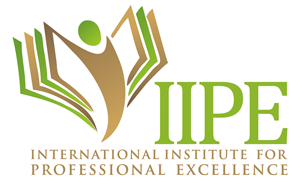We have the privilege of engaging in nearly a thousand conversations with decision-makers in a variety of medium to large organizations. Our questions usually focus on our Leadership Circle Profile assessments. Best part is that these decision-makers invariably fall into two schools of thought: The first group is looking for a leadership assessment to use in an event: a weekend retreat, a workshop, for leadership development month, or simply to give useful information to a manager. The second group sees leadership development as a key strategic business priority. These decision-makers want to explore how The Leadership Circle Profile can be integrated into a distinct leadership development process that would include debriefing by a coach, action/goal planning, and coaching follow-through for a term of three to twelve months. Of these two approaches I have seen significantly greater results with those organizations that approach leadership development as a process.
360° Reports Do Not Create Better Leaders
The Leadership Development Process Requires Support
The Leadership Circle subscribes to the notion that leadership development is a transformation process. It does not happen in a weekend. By raising his/her awareness with the support of a powerful 360° assessment, like The Leadership Circle Profile, managers become more conscious of what they do and why they’re doing it. But for this process to succeed, it needs support and follow through, and there’s research to back this up:
8,000 managers from Fortune 100 companies received 360° feedback and leadership training.Eighteen months
later they were evaluated for leadership effectiveness.
55% of managers who consistently followed through were rated more effective (+3 on 3 point scale i.e.
significant sustained improvement) versus only 6% of those who did no follow-through.
34% of those with no follow-through showed no improvement and 20% with no follow-through got worse!
Conclusions
• Real leadership development is a process: Development Goals + Follow-through = Results.
• Almost any follow-up is better than none.
• The biggest challenge for most leaders is practicing their understanding of leadership.
• If managers attend a leadership program and fail to follow-up with their people, they might as well have stayed home.
Best Practices that Enable Leadership Development
While every leadership development initiative is unique, there are several practical strategies that are consistent with clients who tell us about how they support transformational change:
- Confidential and objective coaching that is focused on one, maybe two, development priorities that will provide the biggest payoff for the individual and/or their organization. The Leadership Circle Profile was built to enable focused dialogue with leaders about their possibilities, as well as beliefs and assumptions may be interfering with their success. The coach will facilitate authentic and honest conversations that will go deeper (about the “what” and the “why”) than they might get from their colleagues or peers.
- A Leadership Development Plan that clearly documents a clear call to action, with specific goals and action steps.Creating “social accountability” where the participant shares his/her development priorities with others, asks for help from others and creates a forum for regular feedback about progress made (or not made). An emerging best practice we are seeing involves year-long cohorts of peers sharing progress, challenges, and holding one another accountable, meeting on a monthly basis.
- Resources made available—outside speakers, reading, training—or other learning resources that directly align to development priorities.The Leadership Circle’s Authentic Leader Workshop helps provide direction and education to leaders committed to transformation.
- Follow-up with the Leadership Circle Profile re-assessment, after significant efforts have been made, to measure progress
- Use of a leadership development process tracking system to manage the development effort. The Leadership Circle offers an excellent resource, our Follow-Through Tool.
Leadership development takes practice, and practice requires support and follow-thorough with the help of an executive coach and goal/action plan. If you’re a coach or consultant, the next time your client asks you to help them with a one-off 360° leadership event, it is important to manage expectations. Consider this is a call for your advocacy. It’s your opportunity to educate your client around a more effective process and outcome.
